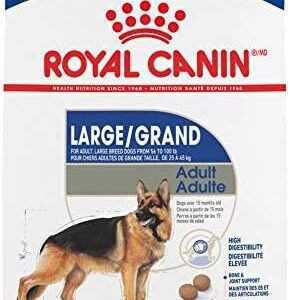As a pet parent, knowing how to safely administer Benadryl (diphenhydramine) to your dog can be crucial during allergic reactions, anxiety episodes, or motion sickness. Our Dog Benadryl Dosage Calculator helps take the guesswork out of determining the right dose for your furry friend. This comprehensive guide will walk you through everything you need to know about using Benadryl for dogs and how to use our calculator effectively.
Dog Benadryl Dosage Calculator
Important: This calculator provides general guidance only. Always consult your veterinarian before giving any medication to your dog.
Recommended Dosage
Notes:
- Standard Benadryl tablets contain 25mg of diphenhydramine
- Give doses every 8-12 hours as needed
- Monitor your dog after giving Benadryl
Do Not Give Benadryl If Your Dog:
- Is less than 6 months old
- Has glaucoma
- Has heart problems
- Has high blood pressure
- Is pregnant or nursing
When in doubt, always consult your veterinarian first.
Understanding Benadryl for Dogs
Benadryl (diphenhydramine) is an antihistamine commonly used in both humans and dogs. While it’s an over-the-counter medication, it’s essential to understand that human medications should only be given to dogs under veterinary guidance. Benadryl can help manage various conditions in dogs, including:
- Allergic reactions to insect bites or stings
- Environmental allergies
- Motion sickness
- Mild anxiety during travel or stressful situations
- Itching and skin reactions
Standard Benadryl Dosing Chart for Dogs
Here’s a quick reference chart for Benadryl dosage based on your dog’s weight (using standard 25mg tablets):
| Dog’s Weight (lbs) | Benadryl Dosage (mg) | 25mg Tablets |
|---|---|---|
| 1-10 lbs | 5-10 mg | ¼ – ½ |
| 11-25 lbs | 10-25 mg | ½ – 1 |
| 26-50 lbs | 25-50 mg | 1 – 2 |
| 51-75 lbs | 50-75 mg | 2 – 3 |
| 76-100 lbs | 75-100 mg | 3 – 4 |
| Over 100 lbs | 100 mg | 4 |
How to Use the Benadryl Dosage Calculator
Our calculator is designed to provide accurate dosing recommendations based on your dog’s specific characteristics. Here’s how to use it effectively:
Step 1: Enter Your Dog’s Weight
- Input your dog’s exact weight
- Choose the correct unit (pounds or kilograms)
- The calculator will automatically convert between units if needed
Step 2: Input Your Dog’s Age
- Enter your dog’s age in years
- For puppies under 1 year, use decimal points (e.g., 0.6 for 7 months)
- Note: Benadryl is not recommended for puppies under 6 months old
Step 3: Select the Reason for Administration
Choose from the following options:
- Allergies/Itching
- Anxiety/Motion Sickness
- Mild Allergic Reaction
Step 4: Review the Results
The calculator will provide:
- The recommended dosage in milligrams
- Number of standard 25mg tablets or portions of tablets
- Recommended frequency of administration
- Important safety notes and warnings
Important Safety Considerations
When Not to Use Benadryl
Do not give your dog Benadryl if they:
- Are less than 6 months old
- Have glaucoma
- Have heart problems
- Have high blood pressure
- Are pregnant or nursing
- Have pre-existing medical conditions (consult your vet first)
Signs of Benadryl Overdose
Watch for these symptoms of overdose:
- Extreme lethargy
- Rapid heartbeat
- Dilated pupils
- Agitation
- Dry mouth
- Seizures
- Difficulty urinating
If you notice any of these symptoms, contact your veterinarian immediately.
Tips for Administering Benadryl to Dogs
1.Timing Matters
- For anxiety or motion sickness: Give 1 hour before the anticipated event
- For allergic reactions: Administer as soon as symptoms appear
- Space doses 8-12 hours apart
2. Choose the Right Form
- Plain diphenhydramine tablets are best
- Avoid liquid forms with alcohol or xylitol
- Never use time-release capsules
- Check ingredients to ensure only diphenhydramine is present
3. Administration Methods
- Hide tablets in treats or pill pockets
- Crush and mix with wet food
- Use pill administration tools if needed
- Always follow with water
Monitoring Your Dog After Giving Benadryl
Expected Effects
- Mild drowsiness
- Reduced allergy symptoms
- Calming effect
- Relief from itching or hives
Side Effects to Watch For
- Dry mouth
- Urinary retention
- Drowsiness
- Mild decrease in appetite
- Slight changes in behavior
When to Contact Your Veterinarian
Seek immediate veterinary care if:
- Symptoms worsen after Benadryl administration
- Your dog shows signs of an allergic reaction to Benadryl
- The initial condition doesn’t improve within 24 hours
- Your dog exhibits unusual behavior or concerning symptoms
Calculator Limitations and Disclaimer
While our Benadryl Dosage Calculator provides accurate recommendations based on standard dosing guidelines, it’s important to understand its limitations:
- It provides general guidance only
- Individual dogs may require different dosing
- It doesn’t account for pre-existing conditions
- Your veterinarian’s advice should always take precedence
- The calculator is not a substitute for professional veterinary care
Conclusion
The Dog Benadryl Dosage Calculator is a valuable tool for pet parents, but it should be used as part of a broader approach to pet healthcare. Always consult with your veterinarian before starting any medication regimen, including Benadryl. Keep track of your dog’s response to the medication and maintain open communication with your vet about any concerns or changes in your pet’s condition.
Remember that while Benadryl can be safe and effective when used properly, it’s just one of many options for managing allergies, anxiety, and other conditions in dogs. Your veterinarian can help you determine the best treatment plan for your pet’s specific needs.
Additional Resources
- Consult your local veterinarian
- Animal Poison Control: 1-888-426-4435
- Keep a pet first aid kit that includes Benadryl
- Download a pet health monitoring app to track symptoms and medication timing
By following these guidelines and using the calculator responsibly, you can help ensure your dog receives the appropriate dose of Benadryl when needed. Always prioritize your pet’s safety and well-being by seeking professional veterinary advice when in doubt.
Frequently Asked Questions
Q: How long does Benadryl take to work in dogs?
A: Generally, Benadryl takes 30 minutes to 1 hour to show effects.
Q: Can I give Benadryl to my dog every day?
A: Long-term use should be discussed with your veterinarian. Benadryl is typically meant for short-term use.
Q: What if I miss a dose?
A: Give the missed dose when you remember, but if it’s close to the next scheduled dose, skip the missed one and resume the regular schedule.
Q: Can I give my dog children’s Benadryl?
A: Only use plain diphenhydramine products. Children’s formulations may contain additional ingredients that are harmful to dogs.
























